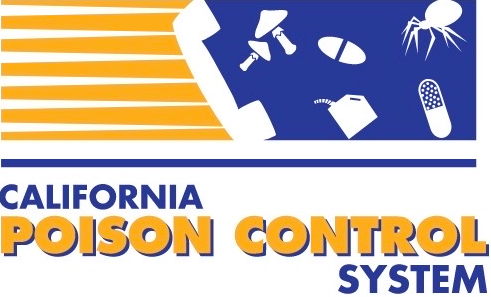By Alicia Minns, MD
Introduction
The differential diagnosis of the hyperthermic patient in the emergency department is broad. It includes sepsis, heat stroke, trauma, neuroleptic malignant syndrome (NMS), malignant hyperthermia, serotonin syndrome, thyroid storm, psychostimulant overdose, anticholinergic delirium, salicylism, and withdrawal states such as baclofen withdrawal. Establishing the correct diagnosis is challenging in the setting of an obtunded patient with limited history. Although sepsis or infection is the most likely diagnosis in a patient with hyperthermia, as the temperature rises, the differential diagnosis expands to include less common conditions such as NMS. Health care providers should consider these rare conditions when evaluating a patient. However, regardless of the cause the initial management is the same, with the focus being on resuscitation and aggressive cooling. This newsletter with briefly discuss the non-infectious causes of hyperthermia related to drug and medication use.
The definition of a fever is a body temperature of greater than100.4 °F or 38 °C. The hypothalamic thermal set point rises and intact thermal control mechanisms cause body temperature to increase. Hyperthermia occurs when thermal control mechanisms fail so that heat production exceeds heat dissipation. In hyperpyrexia, fever presents with an extreme elevation of body temperature greater than or equal to 41.5 °C (106.7 °F). Hyperthermia is best treated in general with external cooling methods to promote heat dissipation, whereas fever can be managed with drugs that lower the thermal set point, such as aspirin, other cyclooxygenase inhibitors or acetaminophen.
Case presentation
A 30 year-old female with a history of depression presented to the Emergency Department with altered mental status. On presentation, her temperature was 103.5 °F, heart rate 122 bpm, blood pressure 100/50 mm/Hg, and her oxygen saturation was 96% on room air. She was confused but following some commands. Her examination was further notable for increased tone in her extremities, inducible ankle clonus and hyperreflexia. Her ECG demonstrated a sinus tachycardia, but was otherwise normal. Complete blood count and serum electrolytes were within normal limits, with the exception of a creatine kinase (cpk) of 1722 U/L, creatinine of 1.65 mg/dL, and an aspartate aminotransferase (AST) of 711 U/L. She was administered 2 liters of normal saline and a workup for possible infection ensued. Her sister later arrived and stated that her paroxetine dose was doubled from 20 to 40 mg last week and that she may have taken a few extra pills. She was additionally started on tramadol for back pain recently. She was admitted to the hospital and paroxetine and tramadol were held. She was continued on a normal saline infusion, and was given diazepam and cyproheptadine. Her symptoms improved over several days. Blood, urine and CSF cultures were negative.
Questions
- Why was cyproheptadine administered to this patient? How does it work?
- What physical examination findings are classic for serotonin toxicity?
- What medications have been associated with serotonin toxicity?
Serotonin toxicity
Serotonin toxicity may result from an overdose or an adverse drug reaction. It has become a common drug effect due to the numerous serotonergic agents prescribed today (see Discussion of Case Questions below). Inhibition of the metabolism of serotonin (monoamine oxidase inhibitors), prevention of serotonin reuptake into neurons (SSRIs), increased serotonin precursor (tryptophan), and increased serotonin release (amphetamines) are the pharmacologic mechanisms that alone or in combination can lead to serotonin excess. Although classically called “serotonin syndrome,” there is a spectrum of toxicity that may range from mild effects that may be barely perceptible to the patient, to severe and potentially life-threatening symptoms.
The classic triad of clinical features of serotonin excess includes altered mental status, neuromuscular excitation and autonomic findings. Patients may be confused, agitated or anxious. Findings of generalized hyperreflexia and sustained clonus are very suggestive of serotonin toxicity. Some degree of increased muscular tone is usually present, which may be confused with the lead-pipe rigidity seen with NMS. These findings most often involve the lower extremities more than the upper extremities, although the mechanism for this is unknown. Hyperthermia, tachycardia, diaphoresis and mydriasis may be present, however are not specific for this condition.
The mainstay of treatment for this condition is supportive care and withdrawal of serotonergic drugs. In mild to moderate cases, symptomatic treatment with benzodiazepines and antiemetics are appropriate and most patients improve within 24 to 48 hours. In severe toxicity, hyperthermia and muscle rigidity may lead to secondary complications such as disseminated intravascular coagulation, renal failure, rhabdomyolysis and hepatic necrosis. Active and passive cooling, sedation and muscular paralysis may be required to prevent these complications. Cyproheptadine is a specific serotonin antagonist used to treat mild to moderate cases and is discussed below in the Discussion of Case Questions.
Neuroleptic Malignant Syndrome (NMS)
NMS is an idiosyncratic, potentially life-threatening complication of antipsychotic medications. It has an incidence of 0.01-0.02% of patients treated with antipsychotics. It is characterized by hyperthermia, severe muscle rigidity, autonomic findings, and altered mental status, which makes it difficult to distinguish clinically from serotonin toxicity if history is limited. The pathophysiology of NMS is related to central dopaminergic receptor-blockade. Typical antipsychotic medications such as haloperidol are most frequently reported as etiologic agents, although NMS may occur in association with atypical antipsychotic medications or with the withdrawal of dopaminergic medications used for Parkinson’s disease.
The majority of cases of NMS present within one month of initiation of antipsychotic therapy. Although most cases present insidiously over days, there are occasional reports of NMS that develop within hours of drug administration. NMS may be initially difficult to distinguish from more common extrapyramidal side effects of antipsychotics; however severe muscle rigidity and elevated temperature should be present for the diagnosis of NMS to be made. In most cases, altered mental status precedes systemic signs. Patients with NMS may develop rhabdomyolysis and risk subsequent myoglobinuric renal failure.
Once the diagnosis is made and the antipsychotic is discontinued, NMS is generally self-limited with a mean recovery time of 7-10 days. Supportive therapy is the mainstay of management and includes aggressive volume resuscitation and benzodiazepines to ameliorate symptoms. Dopaminergic agents such as bromocriptine and amantadine have been shown to reduce time to recovery and may be considered in combination with the aforementioned treatments. The use of dantrolene for NMS is controversial. It may be useful in cases with extreme temperature elevations and rigidity although a recent meta-analysis did not support its efficacy in NMS. Neuromuscular paralysis can also be employed in severe, refractory cases.
Malignant Hyperthermia (MH)
Malignant hyperthermia is a potentially fatal disorder triggered by exposure to volatile anesthetics and succinylcholine. The genetic basis for this disorder is complex and multiple mutations in the gene that encodes for the ryanodine receptor have been identified. The ryanodine receptor is located on the sarcoplasmic reticulum in skeletal muscle and functions as an intracellular calcium release channel. The genetic mutations associated with this disorder lead to the heterogeneity of inheritance and clinical presentation. Inheritance is autosomal dominant and affects both otherwise healthy individuals and people with certain myopathies. The syndrome is caused by an abnormally increased release of calcium from the sarcoplasmic reticulum in skeletal muscle. Mortality has been reported to be as high as 70% in the absence of immediate treatment, however has decreased to 10% with early recognition and the administration of dantrolene.
MH usually occurs shortly after the administration of anesthetic agents, but may occur insidiously several hours after the anesthetic is given. Clinically, patients develop a hypermetabolic state manifested by an elevation in CO2 production, tachycardia, labile blood pressure and muscle rigidity. This quickly leads to a metabolic acidosis, rhabdomyolysis and subsequent renal failure. Dysrhythmias and disseminated intravascular coagulation may occur. Hyperthermia is not universal, and when it occurs is generally a late finding.
Dantrolene, the antidote for malignant hyperthermia, inhibits calcium release from the sarcoplasmic reticulum thereby modulating skeletal muscle excitation-contraction coupling. It causes weakness but not paralysis and should be considered in patients with severe hyperthermia when the diagnosis of MH cannot be excluded. The initial dose is 2-3 mg/kg IV that may be repeated every 15 minutes, up to 10 mg/kg. Occasionally higher doses are needed. After initial treatment, dantrolene should be continued at 1-2mg/kg IV or orally every 6 hours for 1-3 days to prevent recurrence of the syndrome. There are reports of dantrolene being used for hyperthermia secondary to other etiologies such as NMS, serotonin syndrome, baclofen withdrawal, thyroid storm and heat stroke. Although there are anecdotal reports demonstrating efficacy in these circumstances, it is not a substitute for aggressive cooling.
Sympathomimetic toxicity
Psychostimulant drugs such as amphetamines, amphetamine derivatives and cocaine are a significant cause of hyperthermia in the Emergency Department patient. Hyperthermia is a common feature in severe poisonings and plays a major role in the demise of these patients. Although the incidence of hyperthermia induced by psychostimulants is not known, experience suggests that hyperthermia often contributes to fatal poisonings. Acute toxic effects include agitation, hypertensive crisis, coronary or cerebral vasospasm, cardiac dysrhythmias, metabolic acidosis, seizures, and hyperkalemia. Rhabdomyolysis and subsequent nephrotoxicity are significant complications and hyperthermia has been found to be more common in patients who develop renal failure.
Treatment involves controlling seizures and severe agitation to prevent their potential contribution to hyperthermia and rhabdomyolysis. Sedating anticonvulsants such as benzodiazepines or paralysis and mechanical ventilation may be used. Controlling hyperthermia with aggressive cooling and treating rhabdomyolysis with IV fluid administration are vital.
Anticholinergic delirium
There are numerous medications and plants that can cause anticholinergic delirium. These include sedating antihistamines (ex. diphenhydramine), anticholinergic plants such as Jimson weed (Datura stramonium), atypical antipsychotics, tricyclic antidepressants, certain muscle relaxants such as cyclobenzaprine, and some antiepileptics such as carbamazepine. Sympathomimetic poisoning with agents such as cocaine and methamphetamine can look very similar on physical examination to anticholinergic poisoning, but those with sympathomimetic poisoning are generally more violent, requiring physical restraint.
Anticholinergic findings suggesting poisoning include hyperthermia, tachycardia, blurred vision, flushed dry skin, absent bowel sounds, urinary retention, agitation, hallucinations, lethargy, mumbling speech, undressing behavior (generally due to hyperthermia) and repetitive picking behavior. Blurred vision and photophobia may be due to mydriasis. Seizures, flaccid paralysis, respiratory depression, and coma may ensue. Anticholinergic effects delay gastric emptying, resulting in a prolonged duration of action. Patients may be amnestic to the events. Treatment consists primarily of supportive care. Mild cases of anticholinergic intoxication may be treated by discontinuing the offending agent alone. However, more serious cases may need to be hospitalized for more prolonged monitoring and observation. Activated charcoal is commonly administered despite the limited evidence of its efficacy. Supportive care is necessary to primarily maintain hydration and treat hyperthermia if present. Foley catheterization is often necessary due to urinary retention. Benzodiazepines can be used for agitation.
Physostigmine is a carbamate that inhibits the enzyme cholinesterase within the body. The result is elevated acetylcholine concentrations at nerve end plates. When physostigmine is administered in cases of anticholinergic toxicity, the resulting rise in acetylcholine concentrations can overcome cholinergic receptor blockade at most nerve terminals, and reverse many anticholinergic effects, including those of the central nervous system. Physostigmine can be considered in two main instances in the treatment of severe anticholinergic intoxication. First and most importantly, physostigmine can be used to solidify the diagnosis of anticholinergic poisoning. In cases where the patient presents without a clear history of anticholinergic plant or medication ingestion, but displays the classic physical examination findings listed above, physostigmine administration can reverse the signs and symptoms of toxicity, confirming the diagnosis and preventing a more extensive and time consuming work up. Secondly, physostigmine can be considered for cases of anticholinergic poisoning with features refractory to conventional management, such as intractable seizures or agitation. If physostigmine is used, the patient should be on a cardiac monitor, with pulse oximetry and a physician at the bedside slowly administering graduated doses of the drug. A common starting dose is 0.5-1.0 mg, with 2.0 mg as a common end point. If the patient has been exposed to tricyclic antidepressants, physostigmine should not be administered, nor should it be considered in patients with cardiac conduction delays, such as a widened QRS duration.
Other etiologies
Other causes of hyperthermia that deserve mention and should be considered in the differential diagnosis of a hyperthermic patient include nonconvulsive seizures, salicylism and baclofen withdrawal. Acute baclofen withdrawal is typically due to an intrathecal pump failure. It presents with hyperthermia, autonomic instability and muscles spasms. This rare condition is potentially life-threatening, however generally responds rapidly to reinstitution of baclofen.
Discussion of case questions
- Oral cyproheptadine (4-12 mg) is a serotonin antagonist (5-HT2) that is useful for moderate serotonin toxicity. It can only be administered orally and therefore has limited use in severe toxicity.
- Serotonin toxicity is characterized by a triad of altered mental status, autonomic effects, and neuromuscular excitation. Generalized hyperreflexia and sustained clonus, especially at the ankle are rarely seen in other conditions and should alert the clinician that serotonin toxicity may be present. Autonomic findings include hyperthermia, diaphoresis, mydriasis and tachycardia. Patients may be agitated, confused or anxious.
- Multiple drugs have been implicated in serotonin toxicity. These include serotonin reuptake inhibitors, other antidepressants such as tricyclic antidepressants, and venlafaxine. Opioid analgesics (such as tramadol), dextromethorphan, and St. John’s wort have been linked. Monoamine oxidase inhibitors (including the antibiotic linezolid), serotonin releasing drugs (amphetamines, MDMA), lithium and tryptophan are also associated.



